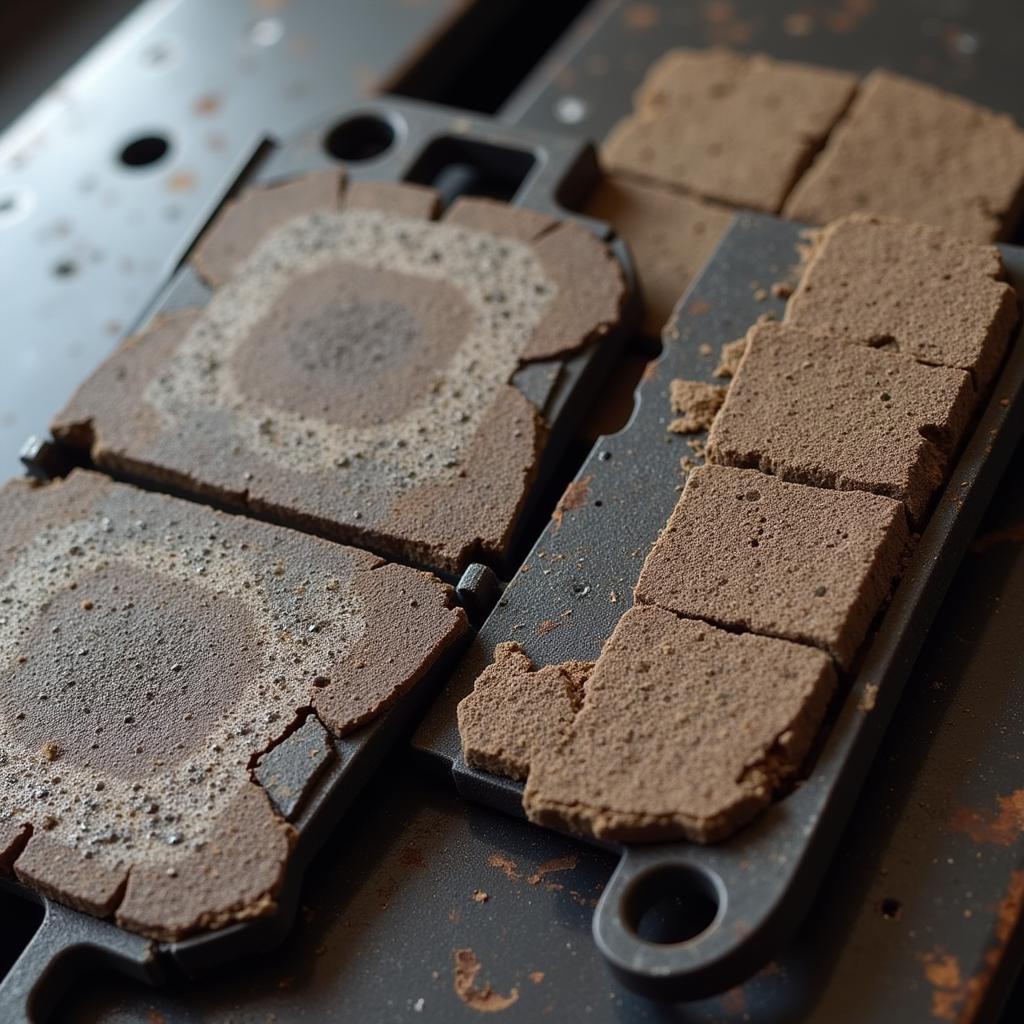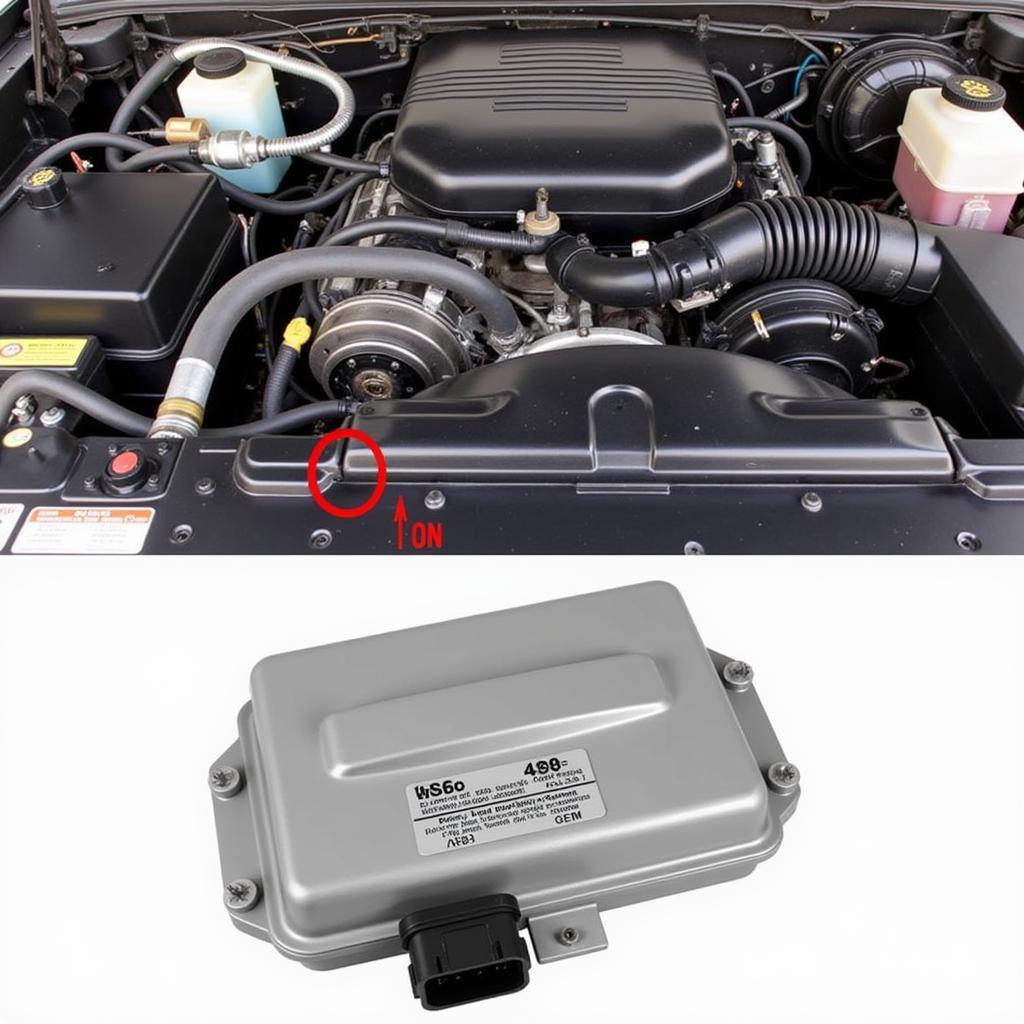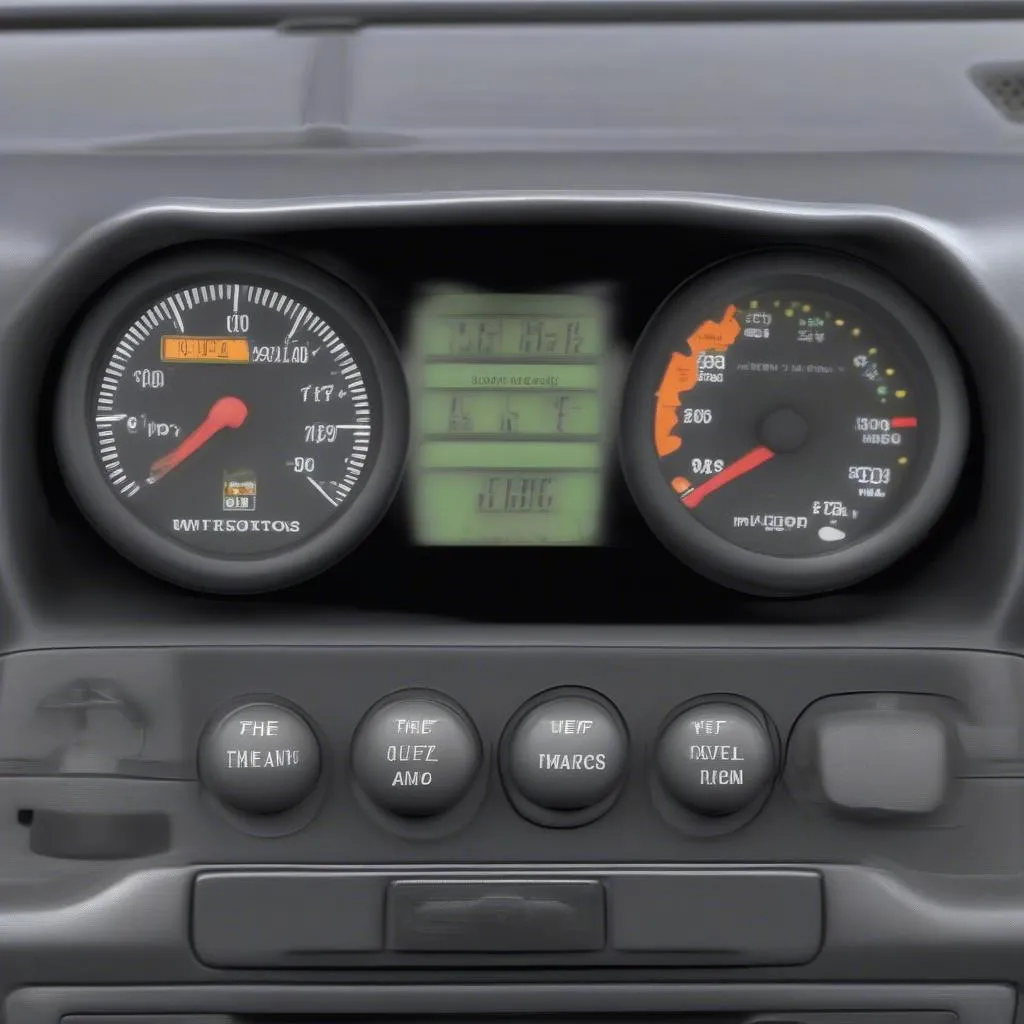The brake warning light on your dashboard is a crucial safety feature, illuminating when your 1996 Ford F250’s braking system detects a potential issue. Ignoring this warning could lead to reduced braking performance and increase the risk of an accident. This article delves into the common causes behind a 96 F250 brake warning light and provides a comprehensive guide to help you diagnose and potentially resolve the problem.
While this guide offers valuable information, it’s essential to remember that it should not replace professional diagnosis and repair. If your brake warning light remains on, it’s crucial to consult a qualified mechanic to ensure your safety and that of other drivers on the road.
Common Causes of a 96 F250 Brake Warning Light
Several factors can trigger the brake warning light in your 1996 F250. Here are some of the most frequent culprits:
1. Low Brake Fluid Level
One of the most common reasons for the brake warning light to illuminate is low brake fluid. This fluid is essential for transmitting the force you apply to the brake pedal to the wheels, ultimately stopping the vehicle.
How to check:
- Locate the brake fluid reservoir under the hood, typically on the driver’s side.
- Check the fluid level against the “Min” and “Max” markings on the reservoir.
Solution: If the fluid level is low, carefully add the correct type of brake fluid recommended for your F250. If the level remains low despite adding fluid, you may have a leak, which requires immediate attention from a mechanic.
2. Worn Brake Pads
Brake pads are designed to wear down over time. When they reach a certain thinness, a sensor within the brake system triggers the warning light.
Solution: Worn brake pads should be replaced immediately to ensure optimal braking performance.
 Worn Brake Pads
Worn Brake Pads
3. Faulty Brake Light Switch
The brake light switch is responsible for activating your brake lights when you press the pedal. A malfunctioning switch can also trigger the brake warning light.
Solution: A faulty brake light switch will need to be replaced.
4. ABS System Malfunction
Your 1996 F250 is equipped with an Anti-lock Braking System (ABS), which helps prevent wheel lock-up during hard braking. A malfunction within the ABS system can also illuminate the brake warning light.
Solution: Diagnosing an ABS issue typically requires specialized equipment. It’s best to take your vehicle to a qualified mechanic for proper diagnosis and repair.
 ABS Control Module
ABS Control Module
5. Parking Brake Engaged
It might seem obvious, but sometimes the simplest answer is the right one. If you’ve left your parking brake partially or fully engaged, it can trigger the brake warning light.
Solution: Make sure to fully disengage the parking brake before driving.
Troubleshooting the Brake Warning Light: A Step-by-Step Guide
If your 96 F250’s brake warning light comes on, follow these steps to troubleshoot the issue:
- Check the parking brake: Ensure the parking brake is fully disengaged.
- Inspect the brake fluid level: As discussed earlier, low brake fluid is a common culprit. Add fluid if needed, but if the level remains low, suspect a leak.
- Visually inspect the brake lines: Look for any signs of leakage, cracks, or damage to the brake lines.
- Listen for unusual noises: When applying the brakes, pay attention to any grinding, squealing, or scraping sounds, which could indicate worn brake pads.
- Check the brake lights: Ask someone to observe if the brake lights illuminate when you press the brake pedal. If not, the brake light switch might be faulty.
“When it comes to brakes, early detection is key,” says John Miller, a seasoned automotive technician with over 20 years of experience. “Don’t ignore the warning signs. Even if the issue seems minor, getting it checked out promptly can prevent more serious and costly problems down the line.”
Conclusion
The brake warning light in your 1996 Ford F250 plays a vital role in alerting you to potential braking system issues. By understanding the common causes and following the troubleshooting steps outlined in this guide, you can take appropriate action to address the problem. Remember, if you’re uncertain about any aspect of your vehicle’s brake system or suspect a serious issue, it’s always best to consult a qualified mechanic for expert diagnosis and repair.

